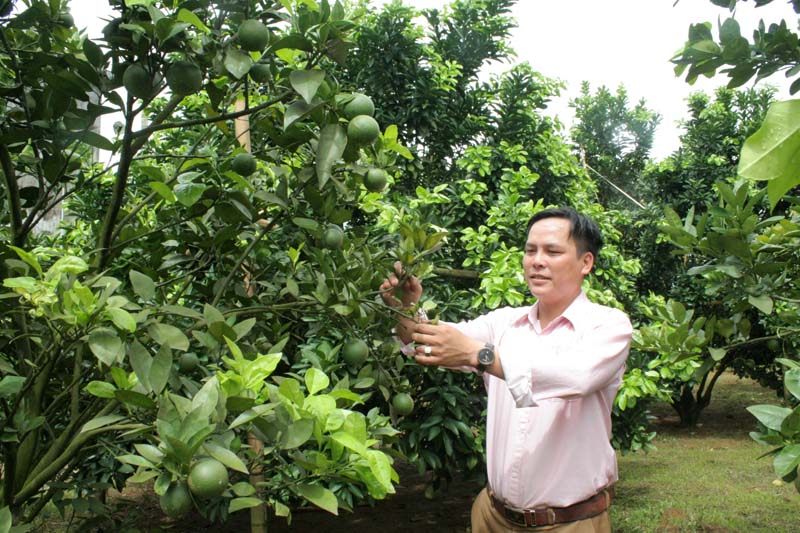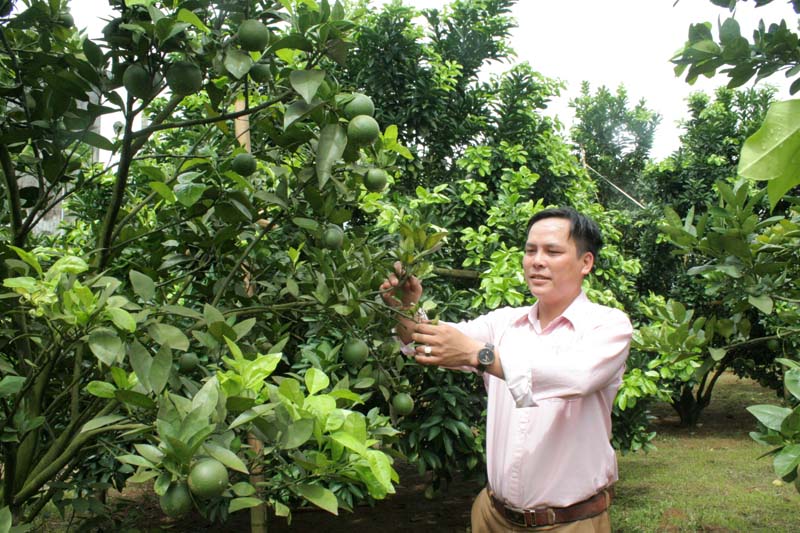



The people in Tan Phong commune (Cao Phong)
invest in growing citrus, increasing the income.
From 2016 to 2018, Program 135 implemented
the supportive production development with the total capital of 4,595 million,
supporting the purchase of fertilizer, breeding cows for 536 households and group
of beneficiaries. Regarding infrastructure investment support, the total amount
of central budget allocated in 3 years is 19,504 million VND, has been invested
in 60 construction items. In two years (2016 - 2017), 41 works were invested
with the total cost of 12,424 million VND. In 2018 there are 19 works with the
total investment of 10,435 million VND.
There are 4 households participating in the
model of climbing lemon trees in Xuan Phong, Dong Phong, Tay Phong and Thung
Nai with a total area of 2.1 ha. There are 233 households taking part in the
model of improving the mixed garden of Cat Que pomelo in Tay Phong, Nam Phong,
Tan Phong, Xuan Phong, Bac Phong, Dung Phong, Thu Phong, Yen Thuong and Yen Lap
communes, with a total area of 51.71 ha. In 2017-2018, 350 households has
also taken part in the Cao Phong orange production and consumption project with
the aim to improve the quality certification and the brand management in Tan
Phong, Thu Phong, Dung Phong, Nam Phong, Bac Phong and Dong Phong communes and
the surounding area with the total area of 400 hectares. 667 households has
participated in rhe project of improving the mixed garden of Dien and Green pomelo
tree planting in 12 communes with a total area of 57 hectares.
Together with the supportive policies from
the Government, Cao Phong’s people have taken the advantage of the potential
and strengths in terms of climate and soil to invest in intensive cultivation
of commodity production with two main varieties, sugar cane and citrus,
bringing high economic efficiency, making a giant leap in agricultural
production. Currently, the district has an area of about 2,400 hectares of
sugarcane and 2,100 hectares of citrus fruit trees. Many households planting
orange trees and sugarcane in Cao Phong have had a stable life and they are
becoming rich from agriculture. In the district, there are many farms and
households earning an average of 500 million to over 1 billion VND per hectare.